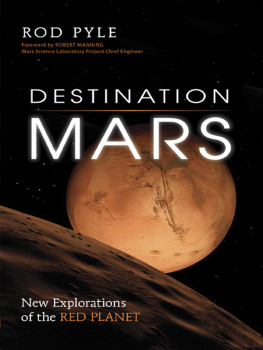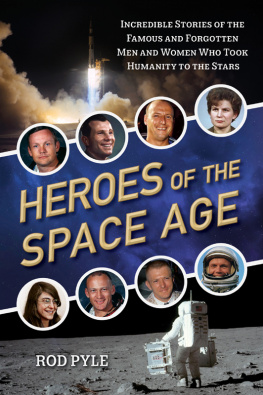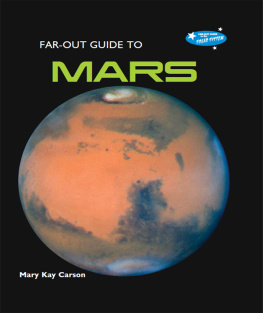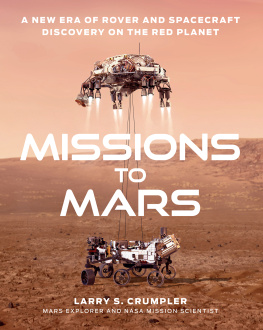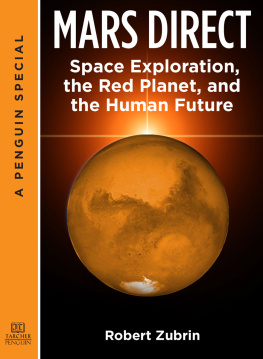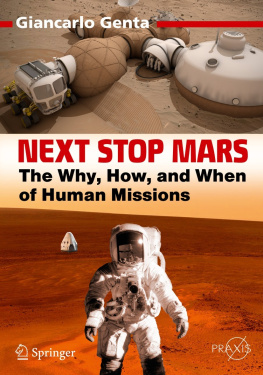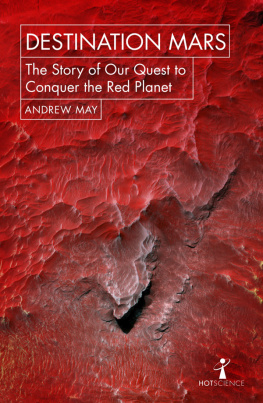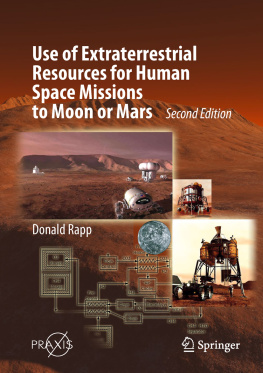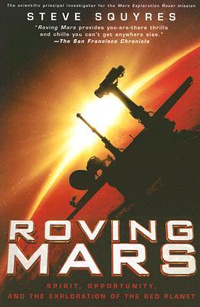
T here are many people to thank for their contributions to this book, and I hope that I have recalled you all.
First, I want to thank the excellent team at Prometheus Books. Linda Greenspan Regan, Steven L. Mitchell, Jade Zora Ballard, Ian Birnbaum, and Jennifer Tordy were all magnificently helpful and supportive. Meghan Quinn handled publicity with mastery. Catherine Roberts-Abel shepherded the book through its many versions, and Laura Shelley provided expert indexing (and, as it turned out, additional proofreading) services.
John Willig, of Literary Services Inc. and my agent, made the book a reality and was wonderfully and unendingly optimistic and supportive throughout. Alex Aghajanian, lifelong friend and attorney, lent his services as always.
The folks at Jet Propulsion Laboratory deserve a major tip of the hat. Rob Manning was supportive and encouraging, and carved out some of his very limited spare time to contribute both a chapter and the foreword for the bookand all this in the midst of readying the Mars Science Laboratory for launch. Guy Webster and Elena Mejia provided access to some of the top minds in Mars exploration today for interviews. And, of course, the people who labor countless hours behind the scenes to provide terabytes of data on the US Mars program online deserve recognitionit is, in my opinion, the finest data repository of its kind anywhere.
Robert Brooks, also of JPL, is a friend of many years and spent a number of hours with me, guiding me through the sometimes-Byzantine history of Mars exploration at NASA, as well as contributing to this book.
Loma Karklins at the Caltech archives was unstintingly helpful in finding somewhat obscure material from that institution's glorious past. Without her assistance, most of the interview material prior to Mars Pathfinder would be absent.
Chip Calhoun from the American Institute of Physics, Niels Bohr Library and Archives, also contributed to the archival efforts. He and the rest of the institute staff gave many hours of assistance retrieving material that is available nowhere else.
Many top researchers and planetary scientists gave me their limited and valuable time for interviews. In no particular order, they are:
Dr. Peter Smith of the University of Arizona
Dr. Steve Squyres of Cornell Universit
Dr. Joy Crisp of JPL
Dr. Richard Zurek of JPL
Dr. Chris McKay of NASA Ames Research Center
Dr. Laurence Soderblom of JPL
Dr. Robert Zubrin of the Mars Society and Pioneer Astronautics
Dr. Jeffrey Plaut of JPL
Dr. Bruce Murray of Caltech
And, posthumously:
Dr. Robert Leighton of Caltech
Dr. Norman Horowitz of Caltech
Gloria Lum provided expert grammar checking and creative input for the text, as she always has for my books, as well as unselfish support all around. Emil Petrinic gave the manuscript a thorough fact-checking, as did Bob Brooks, Dr. Jack Giuliano, and Robert Manning. True friends all. Jason Clark spent countless hours transcribing interviews late into the night.
Ken Kramer, friend of thirty-five years and a professionally trained psychotherapist, doubtless utilized some of his education in our many late-night chat sessions during the authoring process. Likewise Rodman Gregg, film producer, and Scott Forbes, entertainment professional. My son, Connor Pyle, gave up many evenings with his dad so that I could indulge myself in the magnificent mystery of writing about something I love. Leonard David, space journalist par excellence, lent support and the occasional answer to the unanswerable. Likewise Andy Chaikin, author of some of the best space-history books of all time. Jeanie and Joe Engle of NASA receive the same credit.
And to the folks who agreed to read galley copies of the book: Dr. Steven Dick, formerly NASA's chief historian; Roger Launius, senior curator at the Smithsonian Institution; Steven Fentress of the Strasenburgh Planetarium; Tony Cook of the Griffith Observatory; Leonard David, a premiere space journalist; and Piers Bizony, bestselling space author.
Book writing is a solitary yet collaborative experience, and without the advice, assistance, and support of these people, such efforts would not be possible. My heartfelt thanks to you all.

Ezell, Edward Clinton, and Linda Neumann Ezell. On Mars. New York: Dover, 2009.
Godwin, Robert. Mars: The NASA Mission Reports. Vols. 1-2. Ontario: Apogee Books, 2000.
Kessler, Andrew. Martian Summer. New York: Pegasus Books, 2011.
Lowell, Percival. Mars. Cheshire, England: New Line Publishing, 2009. First published in 1897, in New York, by Houghton Mifflin.
. Mars as the Abode of Life. Boston: Adamant Media, 2002. First published in 1898, in London, by Smith, Elder.
Maimone, Mark, P. Charles Leger, and Jeffrey Biesiadecki. Overview of the Mars Exploration Rovers' Autonomous Mobility and Vision Capabilities. Washington, DC: National Aeronautics and Space Administration (NASA)/Jet Propulsion Laboratory (JPL), 2007.
Morton, Oliver. Mapping Mars. New York: Picador/MacMillan, 2002.
National Aeronautics and Space Administration (NASA)/Jet Propulsion Laboratory (JPL). JPL Technical Memorandum no. 33-229. In To Mars: The Odyssey of Mariner IV. Washington, DC: NASA/Caltech, 1965.
. Mars Climate Orbiter Press Kit. Washington, DC: NASA/JPL,1999.
. Mars Global Surveyor (MGS) Loss of Contact. Washington, DC: NASA/JPL, 2007.
. Mars Reconnaissance Orbiter Press Kit. Washington, DC: NASA/JPL, 2006.
. Mars Science Laboratory Radiological Contingency Planning. Washington, DC: NASA/JPL, 2010.
. NASA Facts: Mars Global Surveyor. Washington, DC: NASA/JPL, 2000.
. NASA Facts: Mars Pathfinder, 5-99AS. Washington, DC: NASA/JPL, 1999.
. NASA Facts: Mars Reconnaissance Orbiter. Washington, DC: NASA/JPL, 2006.
. NASA Facts: Mars Science Laboratory 2011. Washington, DC: NASA/JPL, 2011.
. NASA Facts: The Viking Mission. Washington, DC: NASA/JPL, 1975.
. NASA Facts 2001: Mars Odyssey 2003. Washington, DC: NASA/JPL, 2003.
. Release 71-215. In Mariner 9 Press Kit. Washington, DC: NASA/JPL, 1971.
Nicks, Oran. A Review of Mariner 4 Results, NASA SP-130. Washington, DC: National Aeronautics and Space Administration (NASA)/Jet Propulsion Laboratory (JPL), 1967.
Turner, Martin. Expedition Mars. New York: Springer-Praxis, 2004.
Wilson, James. Two Over Mars: Mariner 6 and Mariner 7. Washington, DC: National Aeronautics and Space Administration (NASA)/Jet Propulsion Laboratory (JPL), 1969.
Zubrin, Robert. The Case for Mars. New York: Touchstone, 1996.
. Mars on Earth. New York: Tarcher, 2003.

SELECTED REFERENCES
Antarctic Expedition Prepared Researchers for Mars Project. ScienceDaily. February 5, 2009. Accessed 2011. http://www.sciencedaily.com/releases/2009/02/090205141509.htm.
Burton, Kathleen. Mars-Like Atacama Desert Could Explain Viking No Life' Results. Release 03-87AR. NASA, Ames Research Center. November 7, 2003. http://www.nasa.gov/centers/ames/news/releases/2003/03_87AR.html.
Next page
